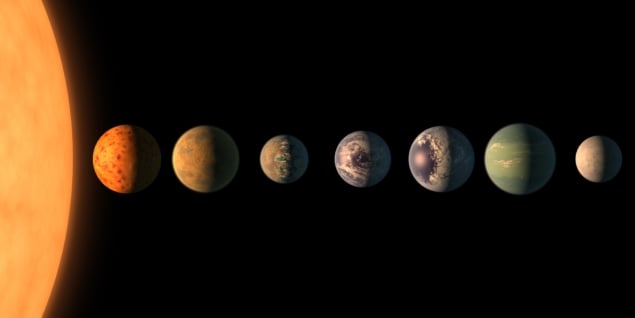
Assuming we accept that life can emerge randomly from the swish of chemicals:
The habitable zone for complex life around many stars could be much smaller than previously thought once the concentrations of carbon monoxide and carbon dioxide on planets is considered. That is the conclusion of astrobiologists in the US, who say that high concentrations of these gases could completely preclude the existence of life on planets orbiting some stars.
The search for extraterrestrial life often focuses on what is known as the “habitable zone” of stars. This is commonly defined as the range of distances from a host star warm enough for liquid water, a key requirement for life, to exist on a planet’s surface. However, according to Edward Schwieterman, at the University of California, Riverside, and his colleagues that description works for basic, single-celled microbes, but not for more complex creatures – everything from simple sponges to humans. Michael Allen, “Toxic gases in habitable zone could hinder emergence of alien life” at Physics World
Abstract: The habitable zone (HZ) is commonly defined as the range of distances from a host star within which liquid water, a key requirement for life, may exist on a planet’s surface. Substantially more CO2 than present in Earth’s modern atmosphere is required to maintain clement temperatures for most of the HZ, with several bars required at the outer edge. However, most complex aerobic life on Earth is limited by CO2 concentrations of just fractions of a bar. At the same time, most exoplanets in the traditional HZ reside in proximity to M dwarfs, which are more numerous than Sun-like G dwarfs but are predicted to promote greater abundances of gases that can be toxic in the atmospheres of orbiting planets, such as carbon monoxide (CO). Here we show that the HZ for complex aerobic life is likely limited relative to that for microbial life. We use a 1D radiative-convective climate and photochemical models to circumscribe a Habitable Zone for Complex Life (HZCL) based on known toxicity limits for a range of organisms as a proof of concept. We find that for CO2 tolerances of 0.01, 0.1, and 1 bar, the HZCL is only 21%, 32%, and 50% as wide as the conventional HZ for a Sun-like star, and that CO concentrations may limit some complex life throughout the entire HZ of the coolest M dwarfs. These results cast new light on the likely distribution of complex life in the universe and have important ramifications for the search for exoplanet biosignatures and techno signatures. – Edward W. Schwieterman, Christopher T. Reinhard, Stephanie L. Olson, Chester E. Harman, and Timothy W. Lyons A Limited Habitable Zone for Complex Life The Astrophysical Journal, 878:19 (9pp), 2019 June 10 | https://doi.org/10.3847/1538-4357/ab1d52 https://iopscience.iop.org/article/10.3847/1538-4357/ab1d52 (open access)
Initial hype:
See also: Does nature just “naturally” produce life?
Can all the numbers for life’s origin just happen to fall into place?
Follow UD News at Twitter!